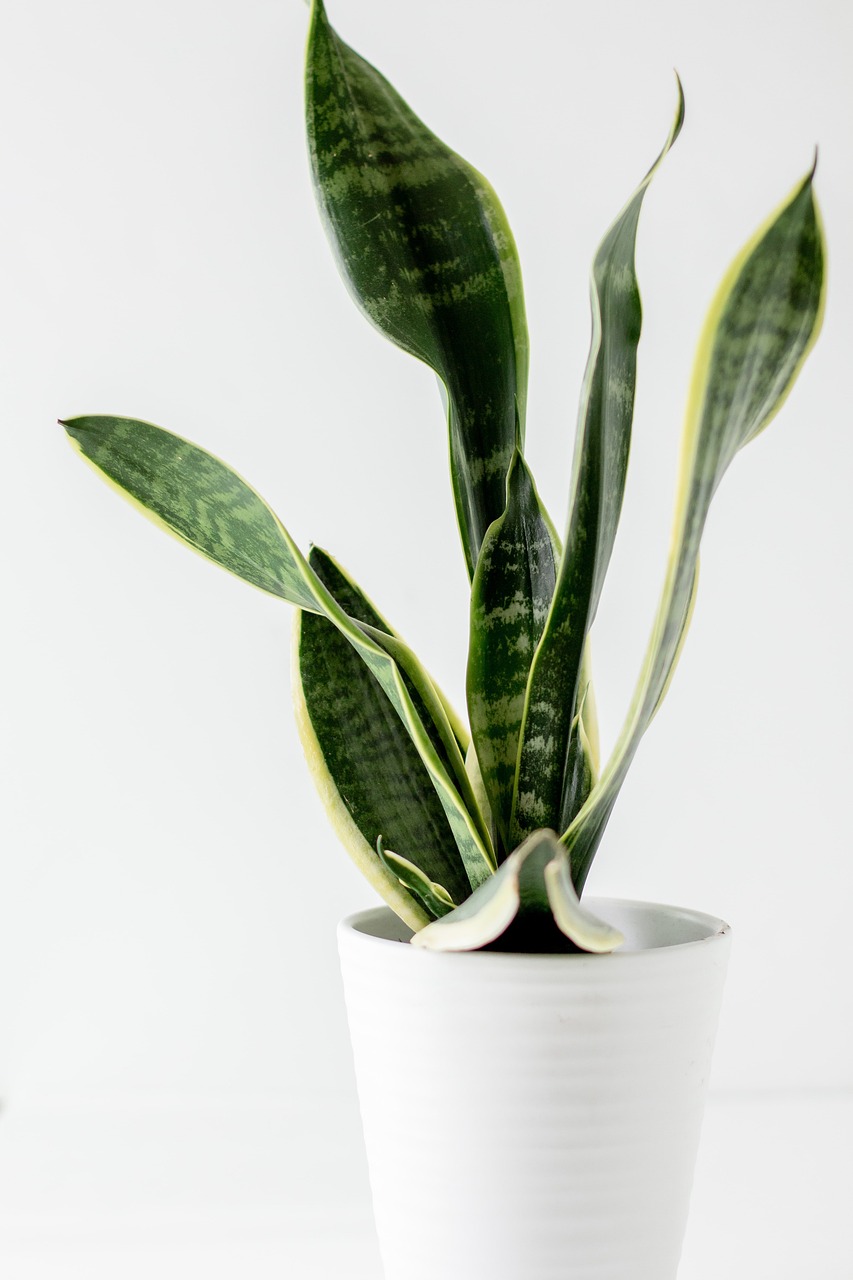The snake plant, also known as Sansevieria or mother-in-law’s tongue, is a popular houseplant known for its striking, upright leaves that are typically green with yellow or white edges. It’s hardy and tolerant of low light and irregular watering, making it ideal for beginners. The plant is also known for its air-purifying qualities, as it can help improve indoor air quality by filtering toxins. Snake plants are low-maintenance and can thrive in a variety of conditions, which adds to their appeal as a versatile indoor plant.
The snake plant holds several significances, both practical and cultural
- Air Purification: It’s known for its ability to filter toxins from the air, making it a popular choice for improving indoor air quality. It releases oxygen at night, which can enhance the atmosphere in bedrooms.
- Low Maintenance: Its hardiness makes it an ideal plant for beginners or those with busy lifestyles. It flourishes in low light and needs very little water.
- Aesthetic Appeal: The snake plant’s unique, architectural shape and striking coloration add a stylish touch to any space, making it a favorite in home decor.
- Cultural Symbolism: In some cultures, snake plants are believed to bring good luck and prosperity. They are often used in Feng Shui to promote positive energy.
- Environmental Benefits: As a resilient plant, it can contribute to biodiversity in indoor environments and promote a more natural atmosphere.
Let’s check out some tips for successfully growing a snake plant
- Light Conditions: Snake plants thrive in a variety of light conditions, from low light to bright, indirect light. However, they prefer indirect light and can tolerate some direct sunlight.
- Watering: Let the soil dry out thoroughly before the next watering. Overwatering is a common mistake, so it’s better to underwater than overwater. Water every 2-6 weeks, depending on humidity and light.
- Soil: Use well-draining potting soil, ideally a cactus or succulent mix. This helps prevent root rot.
- Pot Selection: Choose a pot with drainage holes to allow excess water to escape. Snake plants do well in clay pots, which help absorb moisture.
- Temperature and Humidity: They prefer temperatures between 60°F to 80°F (15°C to 27°C). They can tolerate lower humidity but thrive in average household humidity.
- Fertilizing: Feed with a balanced houseplant fertilizer during the growing season (spring and summer) every few months, but avoid over-fertilizing.
- Repotting: Repot every 2-3 years or whenever the plant becomes root-bound. Select a pot that is just a bit larger than the current one.
- Pest Control: Check for pests like spider mites or mealybugs. If you notice any, treat them with insecticidal soap or neem oil.
- Propagation: Snake plants can be easily propagated by division or leaf cuttings. For leaf cuttings, let the cut end dry for a day or two before planting it in soil.
- Pruning: Trim away any dead or damaged leaves to promote the plant’s health and encourage new growth.
With these tips, your snake plant should thrive and add beauty to your space!
Here are some ideal directions for placing a snake plant in both home and office settings
Home
- Living Room:
- Best Location: Near a window with indirect light or in a corner where it can receive filtered sunlight.
- Tip: Place it on a plant stand for added height and visibility.
- Bedroom:
- Best Location: On a nightstand or dresser.
- Tip: Its air-purifying qualities are beneficial at night, making it a great addition to improve air quality while you sleep.
- Kitchen:
- Best Location: On a countertop or shelf with indirect light.
- Tip: It thrives in the humidity often found in kitchens.
- Bathroom:
- Best Location: On a windowsill or shelf.
- Tip: The humidity can benefit the plant, and it adds a nice touch to the decor.
Office
- Desk:
- Best Location: On your desk or a nearby table where it can get indirect sunlight.
- Tip: It can improve air quality and create a calming workspace.
- Reception Area:
- Best Location: In the lobby or waiting area, where it can receive light.
- Tip: It’s an attractive, low-maintenance plant that enhances the overall ambiance.
- Corner Spaces:
- Best Location: In less utilized corners to brighten up the space.
- Tip: It adds vertical interest without taking up much floor space.
- Near Windows:
- Best Location: Close to windows with filtered light.
- Tip: Avoid placing it in direct sunlight, which can scorch the leaves.
General Tips on snake plant
- Avoid Drafts: Keep the plant away from drafty areas or heating vents.
- Accessibility: Make sure it’s in a spot where it can be admired but not in the way of daily activities.
- Balance: Consider placing it alongside other plants for a more lush look, but be mindful of varying light and water needs.
With the right placement, your snake plant can thrive and enhance your living or working environment! Overall, the snake plant is valued for its beauty, ease of care, and benefits to indoor living spaces. Happy Gardening!!


